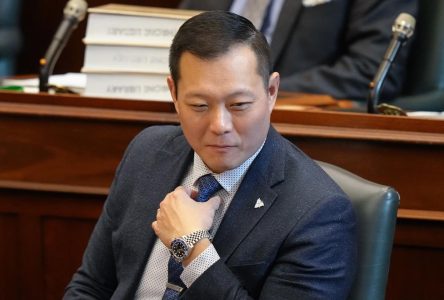BRAMPTON, Ont. — The problems plaguing Brampton, Ont., are so clear, even radically different politicians start to sound alike when they campaign in the city.
But the provincial parties’ nearly indistinguishable promises aren’t enough to convince some residents that wages will go up, the cost of living will go down and the city will finally get a second full-servicehospital.
“I’m a cynic to politics and politicians. They’re all fake to me,” said Brahmbind Kamboj.
The 25-year-old lawyer-in-training and longtime Brampton resident said he’s resigned to the status quo, despite being politically motivated enough to do campaign work in previous election cycles.
For too long, the party leaders tell constituents in the city, other politicians have made big promises and failed to follow through. They will be different, they say.
But one of the biggest issues party leaders are touting in Brampton isn’t new. The Progressive Conservatives, New Democrats and Liberals are all promising to turn Peel Memorial Centre back into a full-service hospital, instead of the simulacrum it became when it reopened in 2017, 10 years after the original hospital closed.
It’s an echo from campaigns past, and Kamboj said he no longer believes any of the parties will follow through.
Likewise, he’s not convinced he’ll be able to afford a house any time soon, if at all, or even a car.
“I’m still sharing a vehicle with my mom,” he added. “I’m a 25-year-old saying I might never buy a vehicle.”
It helps minimize the financial burden of car insurance, he said, as rates in Brampton are among the highest in the province.
Brampton is a key piece of the vote-rich Greater Toronto Area, where politicians spend much of their time campaigning. The region can win — or lose — elections for parties.
Politicians love to highlight affordability and health-care issues during election season in an effort to capture the five ridings in the city, said Ajay Sharma, who teaches political science at the University of Guelph and lives in nearby Mississauga.
“Compare this election platform to the last one, to the one before that,” he said. “The same things have been said in Brampton all the time. The same types of people get elected and same type of results ensue.”
The city of more than 650,000 is unique in many ways, he noted.
Data from last year’s census on ethnocultural and religious diversity has yet to be released, but in 2016, 73 per cent of Brampton residents identified as visible minorities, compared to just 29 per cent across Ontario.
A full 44 per cent of Brampton residents identified as South Asian. Across the province, the percentage was just 8.7.
That year, nearly 21 per cent of Brampton’s residents had immigrated to Canada from India.
The annual federal immigration report shows the flow of new residents into Brampton has continued since then. And while it makes sense that new immigrants want to move to the same community where their families have already settled, Sharma said that presents some challenges.
“The pressures increase, but the levels of services to alleviate those pressures are not there and the funding is not there,” he said.
Density in the suburb is also high, with more than 26 per cent of Brampton households including five or more people, according to the 2021 census. Across the province, only 9.9 per cent of households were that size.
That, combined with the high concentration of factories, warehouses and other essential workplaces in Brampton, led to the city being particularly hard hit by the COVID-19 pandemic.
Anita Clappison, a registered practical nurse who lives in Brampton and works at a hospital in Toronto’s northwest corner, experienced that first-hand.
She said the hospital where she works became so crammed that formerly shuttered rooms were reopened, and formerly private rooms became shared.
“They were putting people into any available space,” she said. ” … And Brampton is always much worse than Etobicoke. We’ve actually had to transfer patients from Brampton to Etobicoke through the pandemic.”
Clappison said working during the pandemic was unlike anything she’d experienced in a 32-year career.
And through it, she said, she felt like the government didn’t value her work because Bill 124 capped her wage increase at one per cent for three years.
The province did offer a temporary $3-per-hour wage top-up, but Clappison said she hasn’t seen that money yet.
“It makes me feel like I picked the wrong profession,” she said. “Like I picked the wrong life.”
The pandemic has also affected 23-year-old Shirley Wang, who graduated from university when campuses were still shuttered and moved back in with her parents in Brampton.
“I’ve really seen first-hand the impact that the pandemic has had on economic opportunity for youth like me,” she said.
“Are we able to afford housing in areas where we have economic opportunity? Are we able to find a stable, well-paying job after we graduate from high school or post-secondary education and are we able to pay for essentials like food, tuition and books?”
For many people she knows, she said, the answer is no.
Wang is involved with Future Majority, a non-partisan organization that aims to amplify issues that matter to young voters while encouraging them to participate in the political process.
“We know that if youth cast their ballot, their voice will truly matter in this election,” she said. “That’s especially true in ridings like the ones in Brampton.”
This report by The Canadian Press was first published May 31, 2022.



